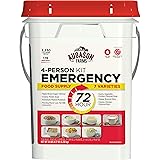Understanding Your Current Financial Situation
Taking Stock of Your Assets
Before diving into financial preparedness, I always recommend taking a good, hard look at what you have. This means gathering all your assets—cash, investments, property, and even personal belongings that may hold value. It’s surprising how many folks overlook things like that vintage guitar or those collectible sneakers. Knowing what you’re working with gives you the starting point you need.
Next step? Calculate your net worth. Subtract your liabilities (what you owe) from your assets (what you own). This snapshot can really highlight the areas where you might need to focus. Trust me, it can be an eye-opener.
Lastly, don’t forget about those emotional ties. I once clung to my college laptop longer than I should have. Sometimes, releasing the past can really free up some mental bandwidth for future planning!
Creating a Realistic Budget
Assessing Income and Expenses
Budgeting in uncertain times can feel daunting, but I found the process can be pretty liberating if you approach it step by step. Start by tracking your monthly income and expenses meticulously. There are countless apps out there that can help you get a clearer picture, or you can go old-school with a spreadsheet—it’s all about what feels right for you.
After you figure out your income, categorize your expenses. Make a distinction between needs (like rent and groceries) and wants (like dining out and streaming services). Prioritizing your needs over your wants can make decision-making easier when unexpected expenses pop up.
Lastly, don’t be afraid to adjust your budget as necessary. Life is unpredictable, and your budget should be too! I’ve found that being flexible allowed me to respond better to sudden financial shifts.
Building an Emergency Fund
Why You Need One
Let’s be real: emergencies happen. There was a time when my car broke down unexpectedly, and boy, did that teach me the value of having an emergency fund! It’s that cushion you need to avoid plunging into debt when things get rough.
I usually recommend aiming for at least three to six months’ worth of living expenses. If that sounds overwhelming, just start with a smaller goal. For example, you could aim for $500. Once you hit that, go for $1,000, and so on. Building it gradually makes it less daunting.
== > What if ... Get a FREE Subscription to PREPARE
Another tip is to automate your savings. Setting up a dedicated savings account and scheduling automatic transfers can help your emergency fund grow without you having to think about it constantly. I use this method, and it’s made a world of difference!
Investing Wisely
Understanding Risk Tolerance
Diving into investments can feel like a roller coaster, especially in uncertain times. The key is to understand your risk tolerance. I find it super helpful to consider my comfort level—how much am I willing to lose before I start panicking? That clarity can guide you to make better investment choices.
Get Preparedness and Self-Reliance Tips. Subscribe Now!
Once you know where you stand, do some research on various investment avenues. Stocks, bonds, mutual funds, and real estate each have their pros and cons. Diversification is your best friend here. Sprinkling your money across multiple assets can really help mitigate risk.
Finally, keep educating yourself on market trends, as they can fluctuate. I set aside some time each week to read up on financial news—it’s invaluable when making investment decisions! Staying informed helps me feel more secure about my choices.
Staying Flexible and Adaptable
Embracing Change
Let’s face it—change is the only constant, and being adaptable can save your financial bacon. I remember when I lost a job during a recession; it was tough. However, I was able to pivot and explore freelance opportunities I hadn’t considered before. The lesson? Always be ready to shift your approach!
I recommend regularly reviewing your financial plans and goals. Set a timeframe—maybe quarterly—to check in on your progress and make adjustments based on life changes or economic shifts. It’s like a financial check-up for your stability.
In addition, don’t hesitate to reach out for advice or support. Talking with friends, family, or professionals can provide new perspectives on your situation. Sometimes, just sharing your worries can lighten the load!
Frequently Asked Questions
1. What is the first step in financial preparedness?
The first step is assessing your current financial situation. Take stock of your assets and liabilities to understand what you have and what you owe. This foundational knowledge is crucial for moving forward.
2. How much should I save for an emergency fund?
Ideally, aim for three to six months’ worth of living expenses. However, starting with a smaller goal, like $500, can make it more manageable while you build your savings.
3. What is diversification in investing?
Diversification is the practice of spreading your investments across various asset types to reduce risk. Instead of putting all your eggs in one basket, diversifying helps protect your portfolio from fluctuations in any single investment.
4. How often should I review my financial plans?
I recommend reviewing your financial plans at least quarterly. This allows you to adjust for any life changes or significant economic shifts, keeping your goals relevant and achievable.
5. Can I seek help with financial planning?
Absolutely! Reaching out to friends, family, or financial advisors can provide valuable insights and support. Don’t hesitate to ask for help—it’s a smart move!






